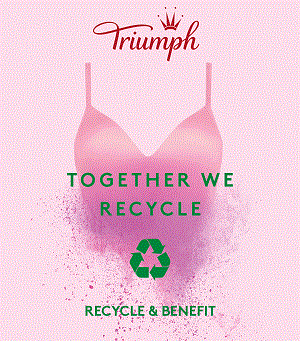Ahhh, ciclul, acea revărsare de sânge şi hormoni în trupul femeii, cunoscută şi sub numele de “menstruaţie“… În engleză există cam 20 de eufemisme, de la “blestem” până la “călărie pe un ponei roşu” (“ponei” = tampon) Şi… ştii ceva? Cele mai “bune” denumiri pentru acest fenomen obişnuit al naturii feminine sunt neutre/ştiinţifice, marea majoritate fiind negativă.
De ce? De ce atâţia bărbaţi se tem şi dau bir cu fugiţii când vine vorba despre acest subiect? Şi de ce atâtor femei le repugnă? Din punctul meu de vedere, ciclul este o minune, binecuvântarea care a transformat lumea într-un loc mai bun şi, de fapt, sursa existenţei noastre.
Primele calendare (începând cu cele antice sumeriene, găsite pe teritoriul Irakului de astăzi) erau toate calendare lunare, bazate pe ciclurile Lunii. Calendarele hinduse antice erau şi ele lunare. Calendarele iudaice erau şi încă sunt lunare. În Arabia Saudită, calendarele musulmane lunare sunt folosite astăzi mult mai frecvent decât cele solare. Calendarul chinezesc este, de asemenea, lunar.
De ce? De ce sunt importante toate aceste cicluri lunare? De ce există până şi o unitate de timp temporală numită “lună”? Ei bine, se pare că ciclul lunar are o importanţă vitală.
Unul dintre motivele pentru care este atât de important este strâns legat de creşterea plantelor şi organismelor. Poziţia lunii are un impact fizic asupra plantei, pornind de la mărimea rădăcinilor şi continuând cu dezvoltarea frunzelor. Ştiinţa modernă ne oferă explicaţii ale acestui fenomen – poziţia Lunii în raport cu Pământul determină mişcările oceanice flux-reflux, contribuind astfel fie la creşterea nivelului apelor, fie la scăderea lor şi la descoperirea ţărmului. Fiecare plantă existentă pe Pământ este afectată de aceste cicluri lunare. Nivelul de sevă din arbori creşte sau scade în funcţie de aceste cicluri, ceea ce se reflectă în structura lemnului.
Insectele sunt şi ele afectate. Dintre acestea, cele a căror existenţă este direct influenţată de lumina Lunii mănâncă mai mult în perioadele în care Luna se află în faza de creştere şi mai puţin în timpul fazelor de descreştere. Această periodicitate le permite plantelor să se odihnească şi să se relaxeze în timpul fazelor de descreştere ale Lunii, în care insectele se hrănesc mai puţin. După cum v-ar putea spune cineva pasionat de pescuit, ciclurile lunare influenţează şi viaţa peştilor. Unele organizaţii tipăresc calendare detaliate ale perioadelor flux-reflux, astfel încât pescarii să ştie care sunt cele mai potrivite momente de pescuit al anumitor specii. Multe alte animale sunt în mod evident afectate de ciclurile lunare, un exemplu bun fiind căprioarele. Şi da, există calendare lunare detaliate realizate şi pentru vânători. Mai mult, numeroase specii de păsări prezintă tipare de migraţie particulare, bazate pe aceste cicluri.
Dar nu despre calendare, căprioare, insecte, peşti sau plante vreau să vă vorbesc, ci, mai curând, despre oameni şi, în special, despre femei. Chiar dacă ciclul menstruaţiilor lunare nu coincide perfect cu cel al Lunii, ceea ce este evident este faptul că ciclurile au o importanţă-cheie în menţinerea ritmurilor vieţii, fiind sincopele pe care-şi sincronizează dansul toate vieţuitoarele.
Cu alte cuvinte, nu doar că este “normal” să treci prin faze de creştere şi faze de descreştere pe care să le experimentezi succesiv, dar este şi absolut esenţial ca asta să se întâmple. Este natural şi normal să experimentezi diferite faze, cicluri şi valuri şi să existe o curgere lină între ele. Este perfect natural şi normal să ai perioade în care fluxul energetic să atingă cote maxime, ajutându-te să ai o perspectivă pozitivă asupra lucrurilor şi să realizezi mai multe. Şi la fel de normal este să treci şi prin perioade depresive, caracterizate printr-un flux energetic scăzut, în care cel mai bun lucru pe care l-ai putea face ar fi să stai în pat, să te odihneşti şi să-ţi pui ordine în gânduri. Apoi ciclul o ia de la capăt, fie că este vorba despre lună şi despre fazele sale sau despre uterul femeii, cu incredibilul de complicat şi frumos sistem hormonal care-l reglează.
Doar în timpurile “moderne” calendarul solar a ajuns să fie considerat superior (deşi cu anumite excepţii – Paştele este în continuare calculat în funcţie de ciclurile lunare). Doar în timpurile “moderne” este considerat “normal” să fii acelaşi în fiecare zi, suferind schimbări minime. Doar astăzi este considerat “greşit” ca femeile să se simtă deprimate sau arţăgoase în timpul unei anumite faze a menstruaţiei. Doar astăzi este considerat “neigienic” şi “dezgustător” ca o femeie să fie la ciclu – ceva ce trebuie ascuns sub straturi de absorbante sau tampoane (depozitate discret în baie) şi niciodată adus în discuţie în timpul conversaţiilor politicoase.
În Antichitate, oamenii înţelegeau că ciclurile lunare reprezintă pulsul vieţii, în aceste cicluri fireşti fiind inclusă şi menstruaţia femeii. Dacă procesul de dezvoltare sănătoasă al unei plante implică perioade de creştere şi de repaos, de ce ar fi el diferit în cazul femeii? Şi dacă nivelul apelor creşte şi scade lunar, de ce n-ar face la fel şi femeia?
Cred că sunt mulţi cei care cunosc mitul zeiţei greceşti Persefona, care-şi petrecea un anotimp în lumea subterană (iad). Acesta este, de fapt, scenariul clasic “moarte, viaţă, renaştere”, prezent în numeroase culturi antice. Astăzi, presupunem că asemenea poveşti sunt valabile exclusiv pentru plante, însă pentru mine reprezintă în mod clar o metaforă a ciclului lunar pe care îl parcurg femeile. Uterul “creşte”, pregătindu-se pentru un copil, şi “moare” atunci când acesta nu apare, apoi se pregăteşte pentru un alt ciclu.
Fără acest ciclu, niciunul dintre noi n-am fi astăzi aici. Fiecare dintre noi a prins viaţă în uter. Şi acest uter a avut nevoie să fie în faza potrivită a ciclului său lunar pentru ca mamele noastre să rămână însărcinate. Da, uneori aceste cicluri pot fi murdare şi dureroase, însă viaţa însăşi e uneori murdară şi dureroasă. Aşa că, eu zic s-o îmbrăţişaţi. Şi mai zic să sărbătorim miracolul lunar al tuturor fazelor menstruaţiei feminine, fără ascunzişuri şi fără apelative negative asociate.
În loc să-I spunem “blestem”, ar trebui mai curând s-o numim “binecuvântare”.
[yt]PeT45BELVzY[/yt]
The English version
Ahh, the ciclu, the monthly flow of blood and hormones in a woman’s body, also known as menstruation. There are about 20 euphemisms for this in English, ranging from “the curse” to “călărie on a red pony” (the “pony” is a tampon). And you know what? The “best” names for this ordinary, normal occurrence in a woman’s body are neutral/scientific while most of the names are negative.
Why? Why do so many men fear it and run away when the topic is even mentioned? And why do so many women dislike it? In my opinion, the ciclu is a beautiful minune, a blessing that has made the world a better place and literally the reason all of us are alive today.
The very first calendars (from Sumer, which became Babylon and is now Iraq) were all lunar calendars, based on the cycles of the moon. The Hindu calendars of ancient India were all lunar. The calendars of the Jews were lunar and still are. If you go to Saudi Arabia, you will see that they use the Muslim lunar calendar more often than the solar calendar the rest of the world uses. The Chinese calendar is also lunar as well.
Why? Why were these lunar cycles so important? Why is there even a unit of time called the month? Well it turns out that the lunar cycle is of vital importance.
One of the reasons why lunar calendars were so important is the growing of plants and crops. The position of the moon has a physical impact on the plant, from the size of its roots to the development of leaf growth. Modern science tells us why – the position of the moon in relation to the earth affects ocean tides and surface water, either raising the water tables or else letting them relax and sink down. Every plant and tree on the Earth is affected by these lunar cycles. The sap in a tree rises and falls based on these cycles and affects the wood when the tree is harvested.
Insects too are affected by these lunar cycles. Some insects which rely on moonlight clearly eat more when the moon is in a bright phase and eat less during a dark phase. This gives plants a chance to relax and rest during the “less active” parts of the lunar cycle when the insects are feeding less. As anyone who enjoys fishing can tell you, lunar cycles affect fish as well. Some organizations print very detailed charts on tides and the lunar cycle so that fishermen can know when is the time to best to fish for certain species. Many other animals are clearly affected by the lunar cycles, including deer. And yes, there are detailed lunar guides
to determine when to hunt. Furthermore many birds have observable migration patterns that are based on lunar cycles.
But I’m not here to talk about calendars, deer, insects, fish or plants but rather humans, specifically women. While a woman’s menstruation cycle is not exactly the same as a lunar cycle, what is clear is that monthly cycles are of key importance to the rhythm of life, the drum beat, the syncopation that all living beings dance to.
In other words, it’s not just “normal” to have an up phase and a down phase and to flow between these two, but absolutely essential. It’s natural and normal to have phases, cycles and waves, and to flow between these. It’s natural and normal to have a period of time when energy is high and the outlook is positive and a lot of work gets done. And it’s normal to have a low period, a depressive period, to stay at home in bed and think about things and to rest. And then the cycle begins again, whether the moon in her phases or a woman’s uterus – and the amazingly complicated and beautiful system of hormones that regulate it.
It’s only in “modern” times that a solar calendar has become paramount (although there are some exceptions – Easter is still calculated based on unar cycles). It’s only in modern times that it’s considered “normal” to be the same every day with little or no change permitted. It’s only now that it’s considered “wrong” for a woman to be depressed or grumpy during one phase of her cycle. It’s only now that it’s “unclean” and “disgusting” for a woman to have her cycle, something that must be hidden under a layer of pads and tampons (discretely stored in the bathroom) and never, ever spoken about in polite company.
The ancients understood that monthly cycles was the rhythm of life, including the cycle of a woman. If a healthy plant needs both a growth period and a resting period, why is it not healthy for a woman to do the same? And if the tides and springs rise and fall on a monthly basis, why not a woman as well?
I think many people know the story of Persefona, a Greek goddess who spends one season in the underworld every year. It’s a familiar story of “death, life, resurrection” that we see in many other ancient traditions about women. Nowadays we assume the stories of Persefona and others like her from other cultures are strictly about plants but to me it’s a clear metaphor for the cycle that all women go through on a monthly basis. The uterus “grows” in preparation for a baby, “dies” when one doesn’t come, and then prepares for another cycle.
Without this cycle, none of us would be here today. Every single one of us came from a uterus. And that uterus had to be in the right part of its cycle for our mothers to get pregnant. Yes, sometimes those cycles can be painful and sometimes messy but then again, life is messy and painful. I say embrace it. I say celebrate the monthly miracle of all phases of a woman’s cycle and no more hiding it, no more bad names for it.
Instead of calling it “the curse”, I think we should call it “the blessing”.
Citiţi şi
Dragostea nu este o permanentă stare de entuziasm
Fără femei libere, lumea toată e în lanțuri
Dacă timpul nu vindecă, ci e chiar boala?
Acest articol este protejat de legea drepturilor de autor. Orice preluare a conținutului se poate face doar în limita a 500 de semne, cu citarea sursei și cu link către pagina acestui articol.































